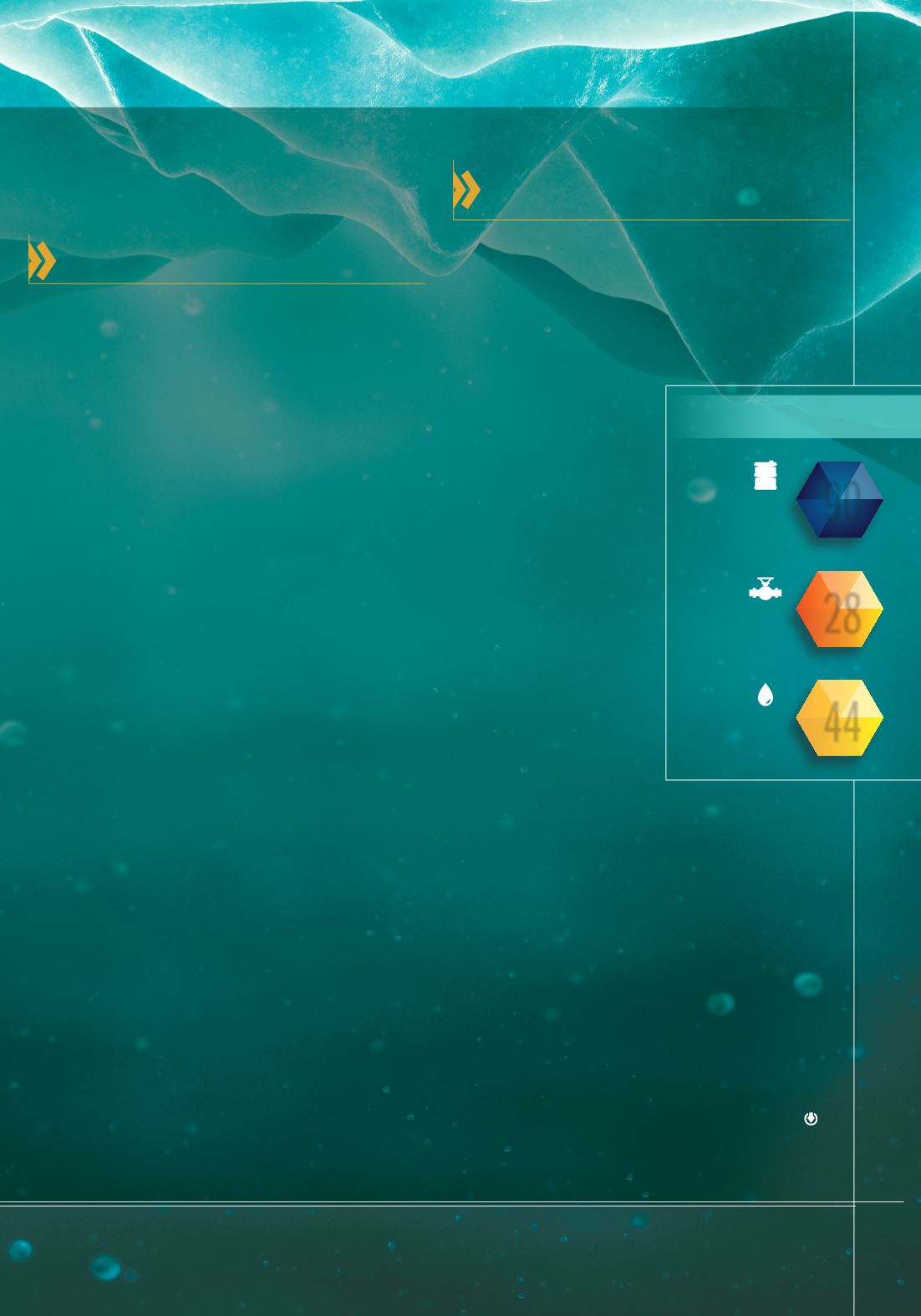

11
I N N O V AT I O N S • V O L . V I I , N O. 2 • 2 0 1 5
development in this forbidding region and to
mitigate risks to personnel, equipment, and the
natural environment.
Finding Solid Ground
One of the first difficulties to conquer relates to the
construction of essential infrastructure.
For onshore projects, for example, the frozen
layer of soil that sits about two meters down (also
known as “permafrost”) has been considered suitable
for the construction of oil and gas infrastructure. But
with the permafrost thawing, it might be harder than
expected to find solid ground for new infrastructure.
“Building on permafrost that is in a thawing
cycle is a complex challenge,” Lim says. “There is no
reliable long-term solution for that, yet.”
Construction can also be done on the soft,
slightly thawed soil that sits above the permafrost.
However, this option is even more costly because it
requires piles to be driven down more deeply to solid
ground beneath.
Given the complexity of onshore drilling in
the Arctic, it may seem somewhat reassuring that
the majority of the region’s oil and gas – about 84
percent of it – is accessible via offshore drilling. But
offshore drilling is not without its own unique
challenges. One of the biggest challenges? Price.
Burying pipelines in the seabed is extremely
expensive. And because shifting icebergs can cause
gouges in the seabed soil, pipelines need to be
buried down to 10 meters deep, a distance that
requires innovative technologies to achieve. Another
challenge is day-to-day operations: Once in place,
buried pipelines need to be inspected, monitored,
and repaired like any other lines.
Can these difficulties be whittled down to size?
Lim thinks so.
“Being able to create new technologies to
overcome Arctic limitations, while promoting
environmental stewardship, can be cost-prohibitive,”
says Lim. “So prospective companies that cannot
afford deep development spending will have to join
efforts in Joint Industry Projects.”
Protecting the Arctic,
Defining the Future
External inspection and monitoring of these deeply
buried lines are impossible using current technologies.
And traditional support vessels, with diver-based or
remotely operated equipment, are unable to access
potential repair sites when the sea is ice-covered – nine
months of the year. So the only way to stop loss
of containment, and the
consequent environmental
impact, is to completely shut
down the operation during
this period, which is rarely
desirable from a business
standpoint.
“Before we ever get to
the Arctic, the industry
will need to find a solution
to temporarily stem a leak
until the sea is ice-free,”
Lim says. Repair vessels
and equipment could then
be deployed to carry out
a permanent repair by cut
and spool replacement.
Developing such a
comprehensive and failsafe
approach to leak detection,
assessment, and repair will require a great degree of
expertise and cross-industry collaboration.
Thanks to ongoing investments in such
sophisticated technology and shared interests
among E&P companies and service providers, many
potentially catastrophic risks – for the environment
and for investors – can be eliminated. And although
some Arctic opportunities are still out of reach, it’s
only a matter of time before technology catches up.
As Lim points out, the Arctic is the last pristine
surface frontier. We all carry responsibility to maintain
that for future generations. And new pipeline
technologies will play no small part in helping to
strike the right balance between development and
preservation that will define the future of the Arctic.
44
28
90 BILLION bbl
Oil
According to the U.S. Geological
Survey, the Arctic may hold:
28 TRILLION m
3
Natural Gas
44 BILLION bbl
Natural Gas Liquids
90



















